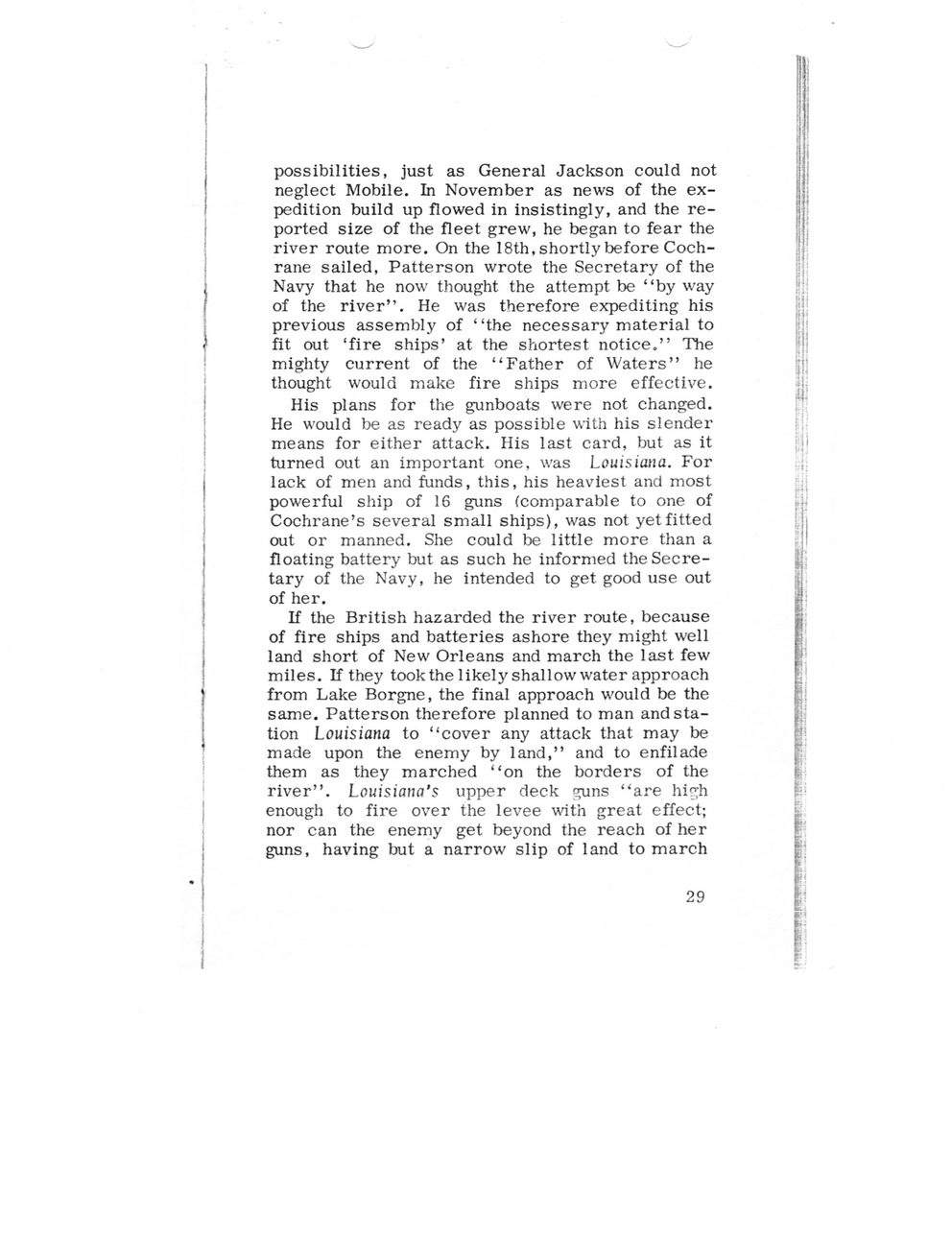This text was obtained via automated optical character recognition.
It has not been edited and may therefore contain several errors.
possibilities, just as General Jackson could not neglect Mobile. In November as news of the expedition build up flowed in insistingly, and the reported size of the fleet grew, he began to fear the river route more. On the 18th, shortly before Cochrane sailed, Patterson wrote the Secretary of the Navy that he now thought the attempt be ?by way of the river?. He was therefore expediting his previous assembly of ?the necessary material to fit out ?fire ships? at the shortest notice.? The mighty current of the ?Father of Waters? he thought would make fire ships more effective. His plans for the gunboats were not changed. He would be as ready as possible with his slender means for either attack. His last card, but as it turned out an important one, was Louisiana. For lack of men and ftinds, this, his heaviest and most powerful ship of 16 guns (comparable to one of Cochrane?s several small ships), was not yet fitted out or manned. She could be little more than a floating battery but as such he informed the Secretary of the Navy, he intended to get good use out of her. If the British hazarded the river route, because of fire ships and batteries ashore they might well land short of New Orleans and march the last few miles. If they took the likely shallow water approach from Lake Borgne, the final approach would be the same. Patterson therefore planned to man and station Louisiana to ?cover any attack that may be made upon the enemy by land,? and to enfilade them as they marched ?on the borders of the river?. Louisiana's upper deck guns ?are high enough to fire over the levee with great effect; nor can the enemy get beyond the reach of her guns, having but a narrow slip of land to march 29

Battle of 1814 P29